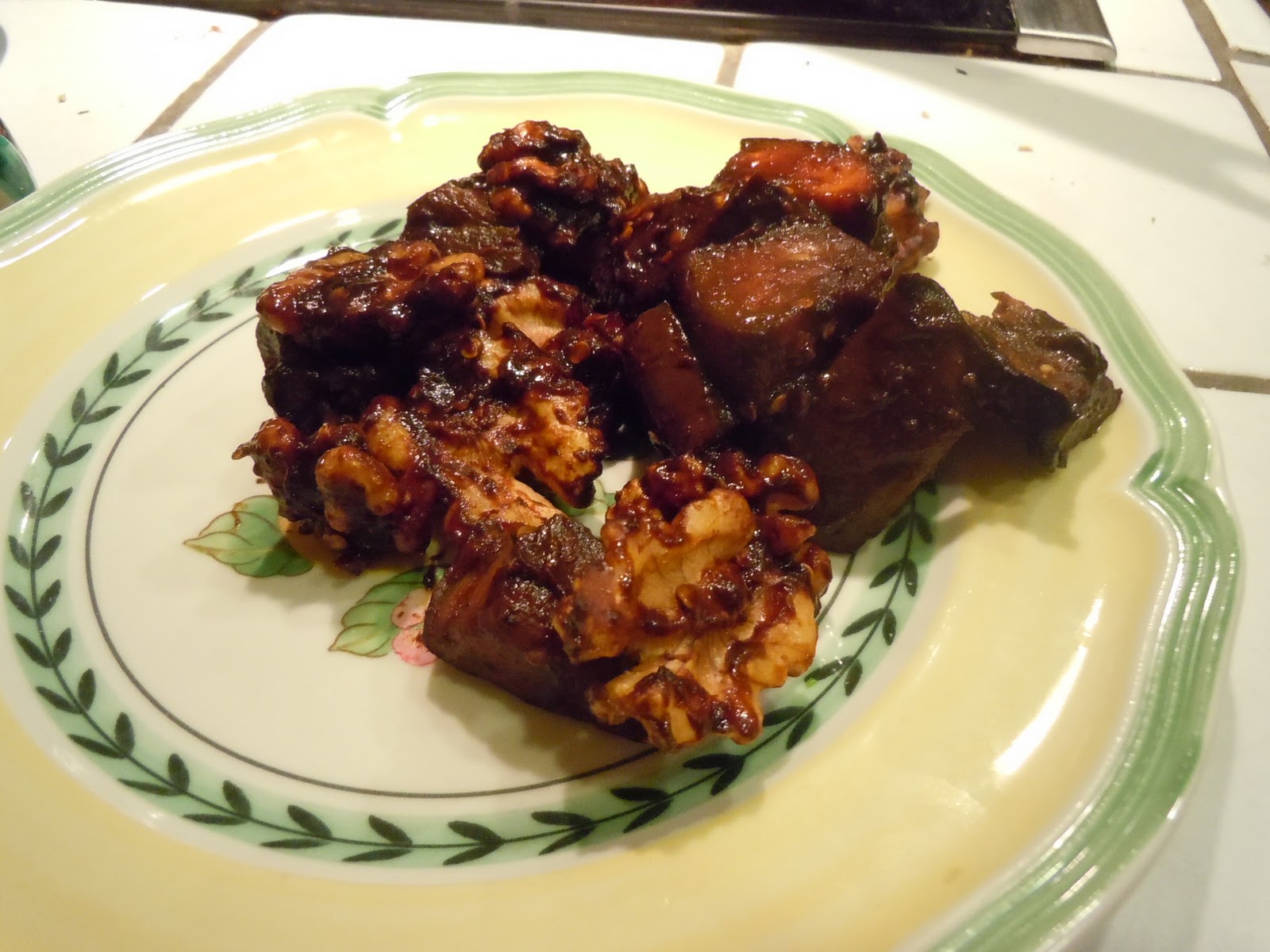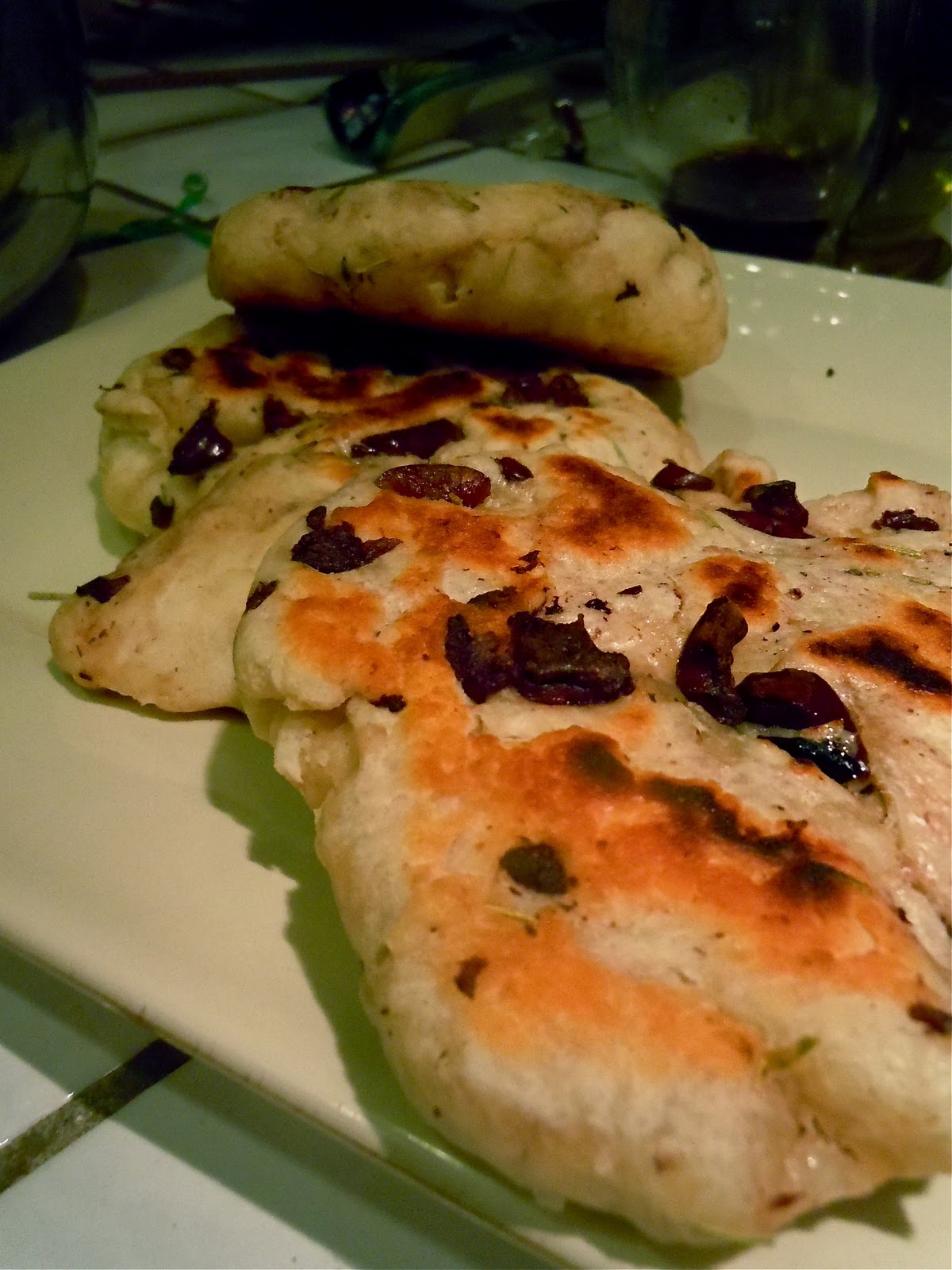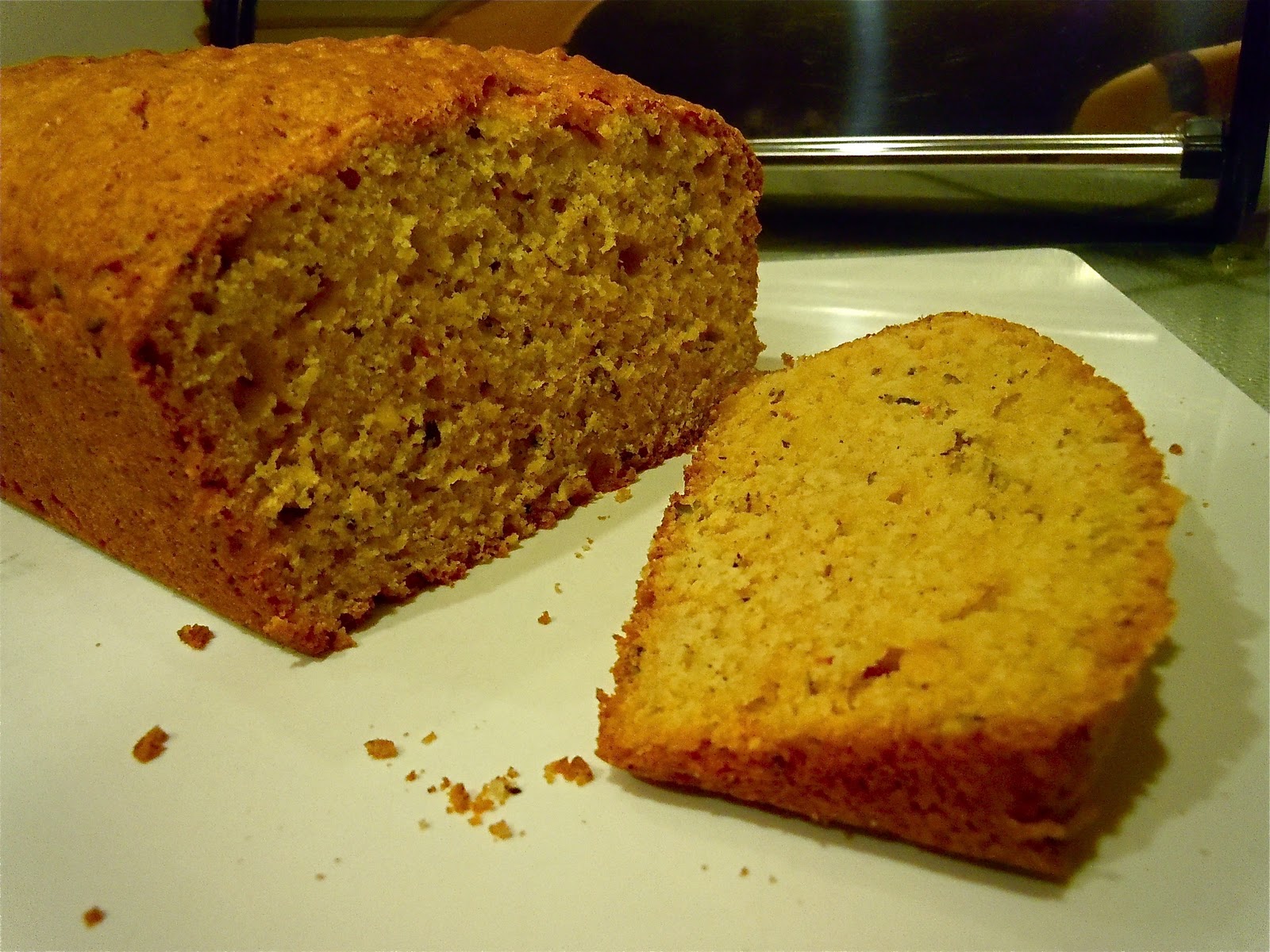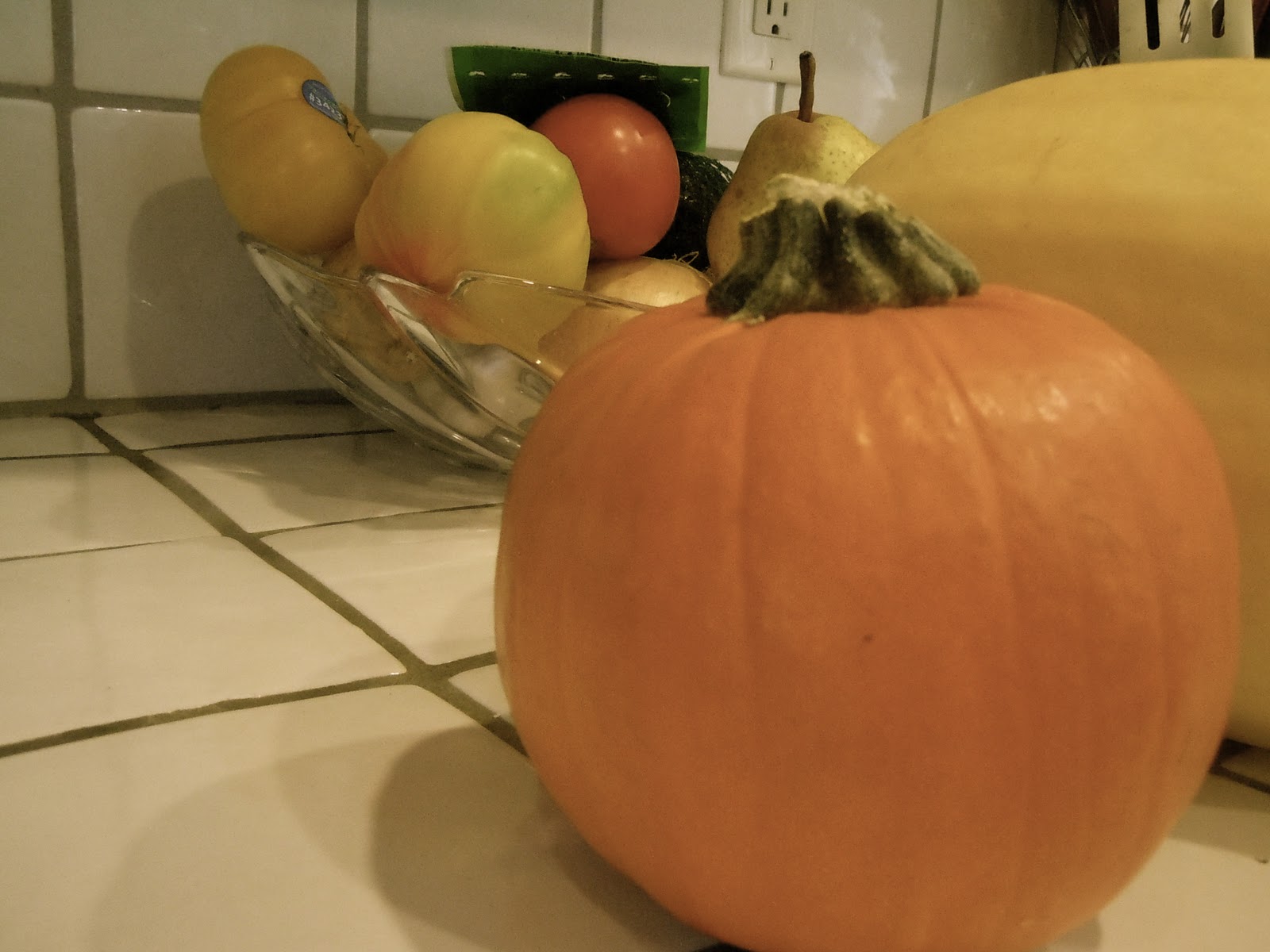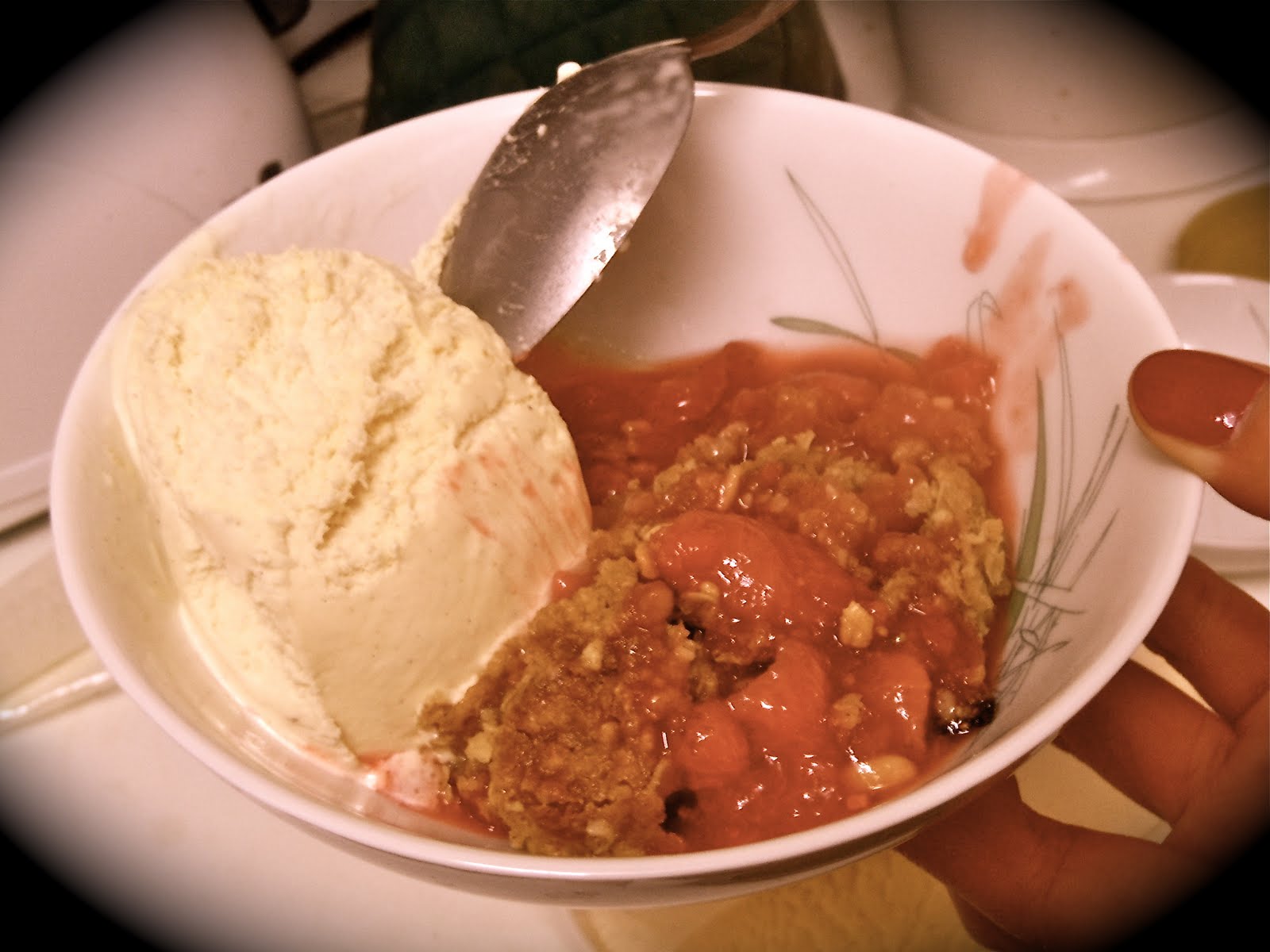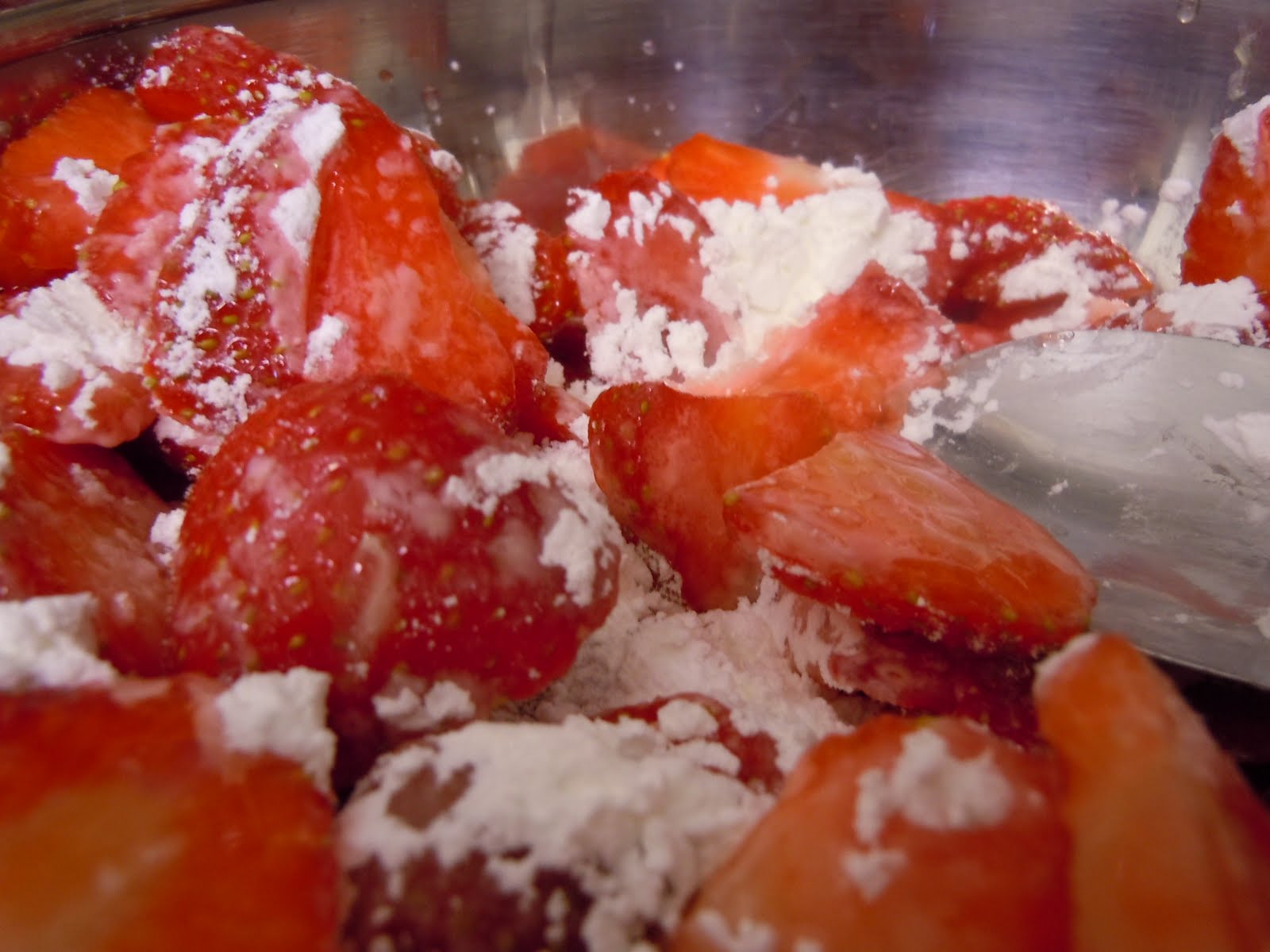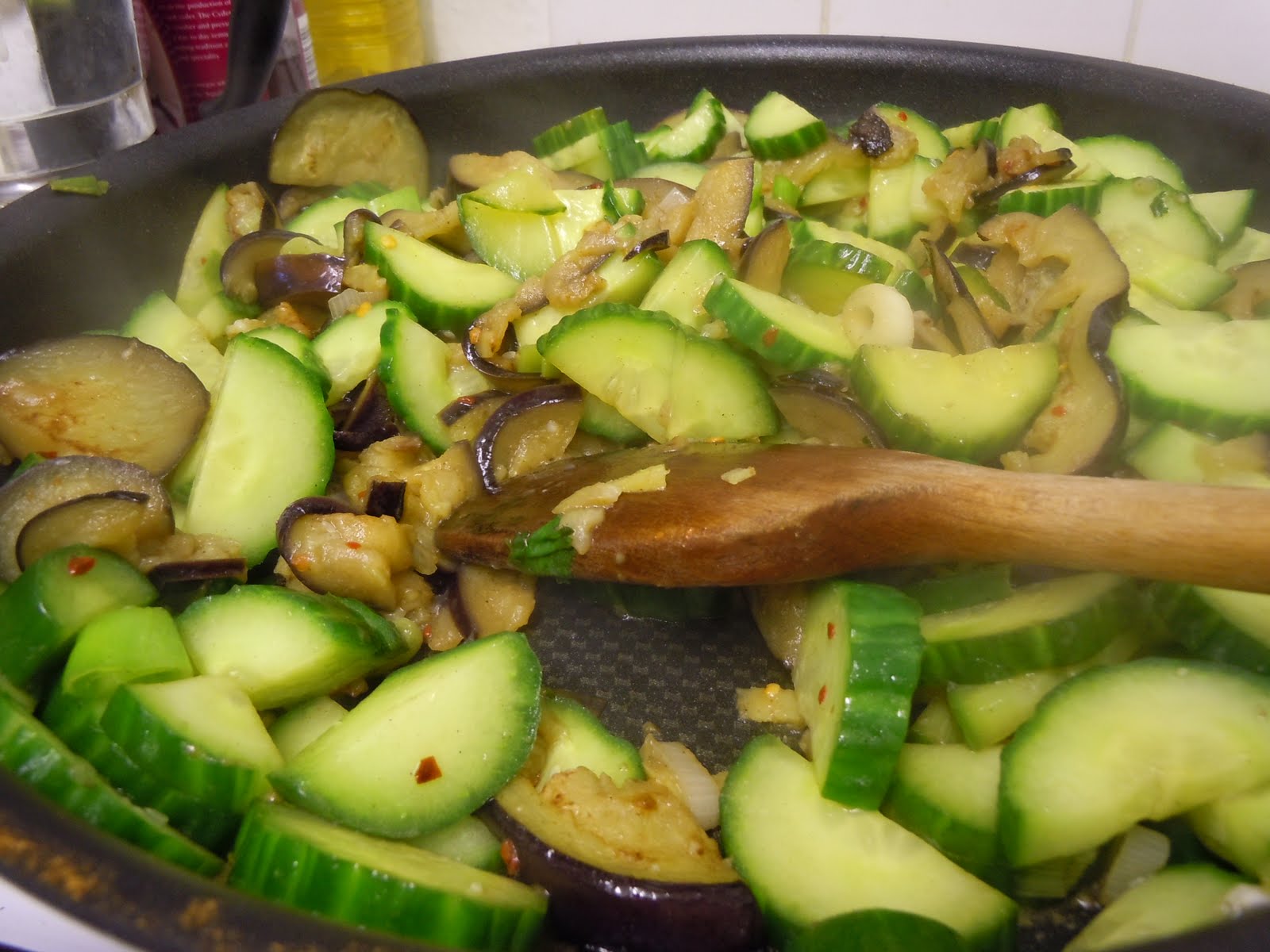Whenever I head back to the Phoenician homelands I have a few restaurants on my "must visit" list. One of these, the Cherry Blossom Noodle Cafe, is perhaps the best thing since sliced bread, serving a wonderfully eclectic blend of sushi, Asian soups, Italian soups, and freshly baked banana bread served with every meal. Yes. That's right. With every meal. It's like someone downloaded my mind and created a restaurant menu from it. This place is heaven.
Anyway, on their menu they feature a fairly standard Asian eggplant salad. Silky cooked eggplant with a soy miso dressing. Fabulous. I've never been able to figure out exactly how they made it, but when I saw a recipe that looked similar in Bittman's "How to Cook Everything Vegetarian", I knew I had to try it.
Alas, it wasn't exactly the same as Cherry Blossom's salad o'glory (I blame my lack of white miso for this), but, hey, you can't imitate heaven. And, that being said, this version is still pretty good. The walnuts make for a good addition, providing a nice crunch against the softness of the eggplant. My quest for the perfect eggplant salad continues, but until then, this recipe will do nicely.
Serves 4
Ingredients
About 1 lb eggplant
2 tablespoons olive oil
Salt
1/3 cup white miso (mine was a dark miso, if using it, I'd recommend no more than 1/4 a cup)
1 tablespoon soy sauce
1 tablespoon mirin
1 tablespoon rice vinegar or freshly squeezed lemon juice
Cayenne (to taste)
1/4 cup chopped walnuts
Method
Trim the eggplant and cut it into 1-inch cubes. If the eggplant are large, soft, or especially seedy, sprinkle the cubes with salt, put them in a colander, and let them sit for 30 minutes, preferably 60. Rinse, drain, and pat dry.
Put two tablespoons of the oil in a large skillet over medium heat. When hot, add the eggplant, sprinkle with salt and pepper, and cook, stirring occasionally, until soft and golden, about 10 minutes. Remove from pan and drain on paper towels.
Whisk together the miso, soy, mirin, and vinegar in a serving bowl. Thin with a tablespoon or so of water if necessary. Add the eggplant, sprinkle with salt and cayenne, then toss. Taste and adjust the seasoning. Serve topped with the walnuts.

